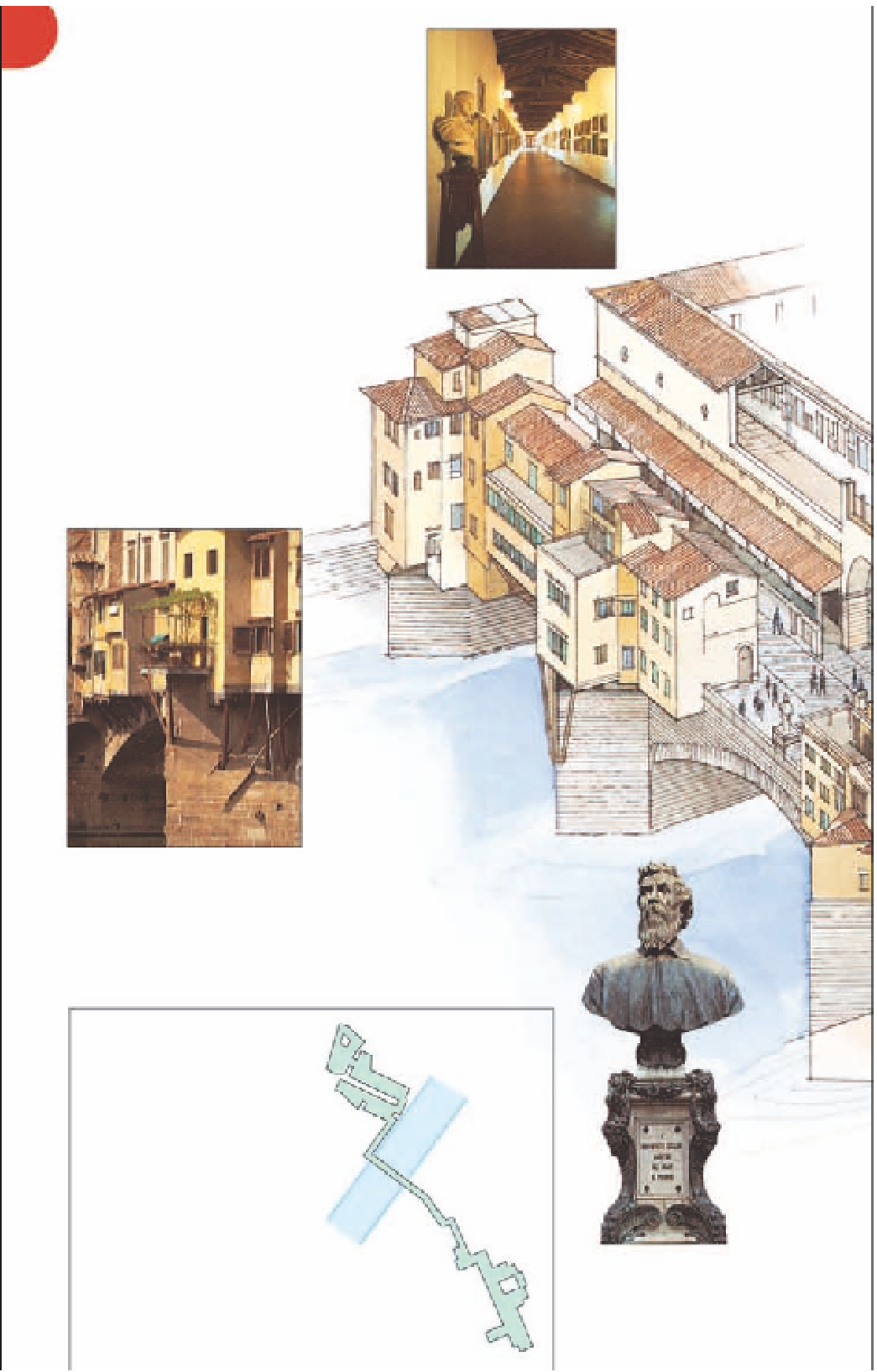Travel Reference
In-Depth Information
Ponte Vecchio
9
The Ponte Vecchio, or Old Bridge -
indeed, the oldest bridge in Florence -
was built in 1345. It was the only
bridge in the city to escape being
blown up during World War II. There
have always been workshops on the
bridge, but the butchers, tanners and
blacksmiths who were here originally
(and who used the river as a
convenient rubbish tip) were evicted
by Duke Ferdinando I in 1593
because of the noise and stench they
created. The workshops were
rebuilt and let to the more
decorous goldsmiths, and
the shops lining and over-
hanging the bridge continue
to specialize in new and
antique jewellery to this day.
Private Corridor
The aerial corridor
built by Vasari along
the eastern side of the
bridge is hung with
the self-portraits of
many great artists,
including Rembrandt,
Rubens and Hogarth.
Medieval Workshops
Some of the oldest work-
shops have rear extensions
overhanging the river,
supported by timber
brackets called
sporti.
The three-arched
medieval bridge
rests on
two stout piers with boat-
shaped cutwaters.
VASARI'S CORRIDOR
The Corridoio Vasariano was
built in 1565 by Giorgio Vasari
and links the Palazzo Vecchio
to the Palazzo Pitti, via the
Uffizi. This private elevated
walkway, also known as
Percorso del Principe
(“Prince's Route”), allowed
members of the Medici family
to move between their
residences without having to
step into the street below and
mix with the crowds. The
Corridor is occasionally open
by guided tour only; tickets
must be booked in advance.
Palazzo Vecchio
The Uffizi
Ponte
Vecchio
Bust of Cellini
A bust of Benvenuto Cellini
(1500-71), the most famous
of all Florentine goldsmiths,
was placed in the middle of
the bridge in 1900.
Palazzo Pitti

















































